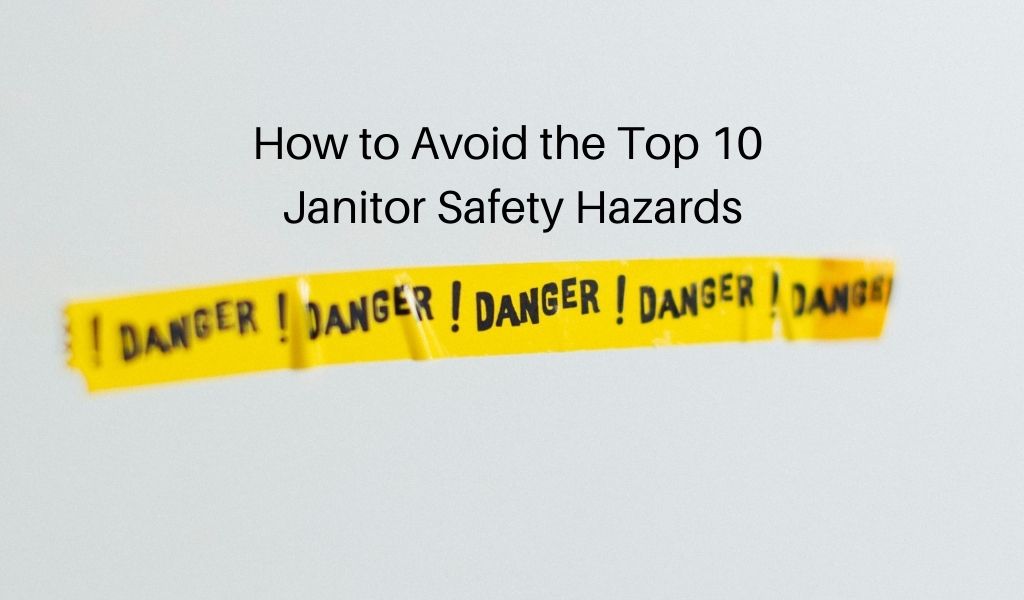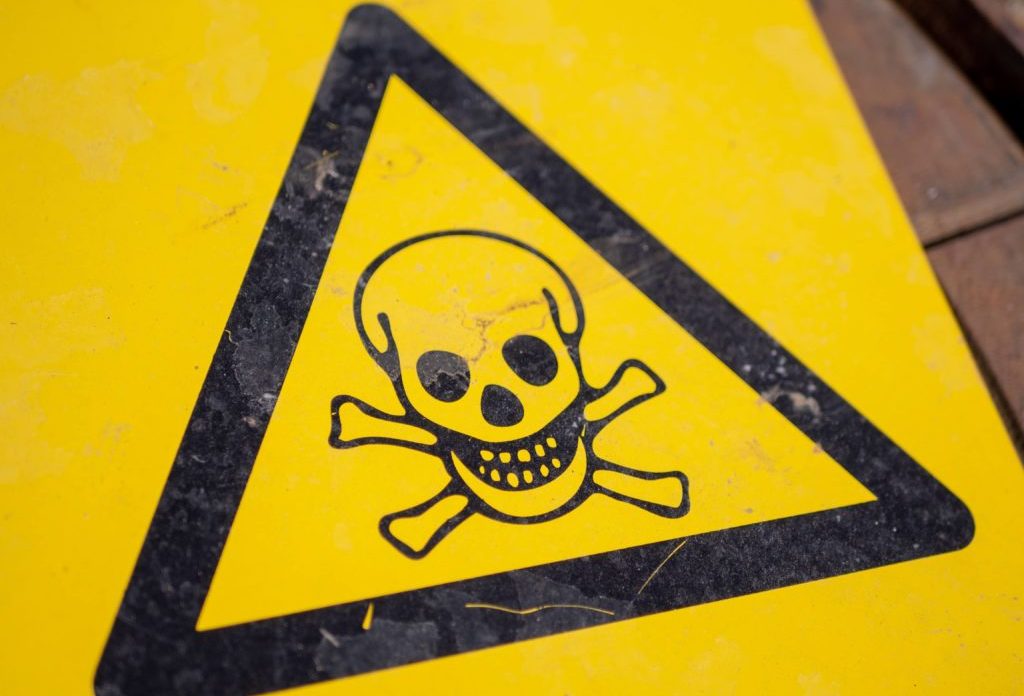Janitor safety is top of mind for many in the cleaning industry. Here are some of the primary hazards janitors may face and how to avoid them.
Cleaning industry professionals face a plethora of on-the-job hazards every day, making janitor safety a significant concern. Custodial professionals likely know most of the risks they undertake, but that doesn’t alleviate employers and job site managers from doing all they can to ensure their staff is kept safe during routine cleaning jobs.
In addition, there are some risks that aren’t thought about as often, but which still present significant danger if not handled or approached properly. And with COVID-19 still lurking around, there’s also that additional concern to deal with daily.
If janitor safety is on your mind lately, here are some of the top hazards that janitors face and what can be done to avoid the hazards altogether or minimize the risk involved with any given dangerous task.
Educate your employees on janitor safety with the help of Janitorial Manager. Find out what we can do to help keep your teams safe by signing up for a free consultation today!
10 Janitorial hazards you can eliminate today
1. COVID-19 contact
Until the beginning of 2020, this wasn’t on the list, but as it stands today, we’re all more aware of the risk of contracting or transmitting COVID-19, as well as many other viruses. Because it’s so easy to catch and so hard to treat, custodial professionals are taking extra precautions to help mitigate the danger posed by the novel coronavirus.
The most important amongst those precautions are properly wearing personal protective equipment (PPE). Disposable masks and gloves at the very least should be worn during all jobs, with workers properly wearing and disposing of their equipment when finished, followed by thoroughly washing their hands. Not sure your teams know the correct ways to use PPE? Employee training can be a huge help here. There are also resources from the CDC and OSHA that can help you get your employees up to speed on PPE use.
2. Slip and fall
Slip and falls are one of the most common accidents to take place on janitorial work sites. All it takes is a recently mopped floor, an untied shoelace, or something else seemingly insignificant to seriously increase the risk to janitor safety. To avoid this type of scenario, employees should place proper signage on wet floors, practice cautious movements on worksites, and reduce threats such as loose clothing. When possible, employees should use harnesses or hold on to handrails, especially when working in precarious positions such as on stairwells or other elevated surfaces. And in the winter months, don’t forget to think about icy front steps and wet floors from melted snow and slush.
3. Biological hazards
In non-healthcare settings, it can be easy to forget about potential biological hazards, but they exist and can be very dangerous to janitor safety if not adequately addressed. Things like mold, fungus, and bacteria can be transmitted in several ways on any given job site, especially if the building is old and has poor ventilation. We recommend training employees on potential biological hazards and reviewing the OSHA standards for how to deal with them.
4. Bloodborne pathogens
A more specific biological threat to janitor safety is that of bloodborne pathogens. Most custodial professionals will only encounter these in healthcare settings, but accidents happen, and blood droplets can appear anywhere, depending on the circumstances. Again, we suggest educating your teams on OSHA’s bloodborne pathogen standard and any other standards that might help prevent transmission of infectious diseases through bloodborne particles.
5. Chemical hazards
Apart from biological hazards, chemical hazards pose a great risk to janitors as well. Things like asbestos, lead, and carbon monoxide, among other things, can be present on job sites and lead to severe health issues if employees aren’t adequately protected. No surprise, OSHA is an excellent resource for this as well.
6. Improper use of chemicals
Another hazard to janitor safety that chemicals present is the improper use of them. If all-purpose cleaner, for example, is used instead of disinfectant, or if the disinfectant isn’t correctly diluted, etc., a worker can experience adverse effects from some of these chemicals. Train workers to read labels of any products they’re not familiar with (even if they think they are) and reinforce this behavior regularly with company update training.
7. Equipment hazards
Sometimes equipment poses a threat to janitorial professionals, especially if it’s heavy equipment like a floor buffer. Ensure that your teams are properly trained to use this equipment and that the equipment is in good working order.
8. Equipment malfunctions
Even if properly trained, sometimes cleaning equipment malfunctions and can cause accidents. Avoid this by inspecting all machinery regularly and requiring employees to report any suspected equipment malfunctions immediately. They should stop using the equipment immediately until it’s deemed safe to move forward.
9. Hearing damage
Another risk that comes along with cleaning equipment is hearing damage. Since much of the machinery is very loud and often used in noise resonating places like open offices and hallways, hearing damage can occur if employees don’t take proper precautions. We recommend foam earplugs for any job that requires the use of a vacuum, buffer, or other loud equipment for extended periods.
10. Poor ventilation
Finally, poor ventilation can cause a variety of health problems, from respiratory issues to infection and worse. This topic has become even more notable since the pandemic as poor ventilation is thought to lead to an uptick in COVID-19 infections. Even aside from COVID-19, many cleaning products include harsh chemicals that can be very dangerous when inhaled for long periods. Train your teams to open windows, turn on air-conditioning units or other ventilation systems while cleaning to help reduce the amount of toxic fumes and infectious particles in the air. When possible, it’s also helpful to wear an appropriate breathing apparatus such as a respirator to help prevent inhalation of dangerous substances.
All of these hazards are relatively easy to avoid. It just takes a little planning and a bit of care.
Track inventories, bid on jobs, communicate with clients and employees, and so much more with Janitorial Manager. Learn more today by getting in touch for a Free Consultation!


